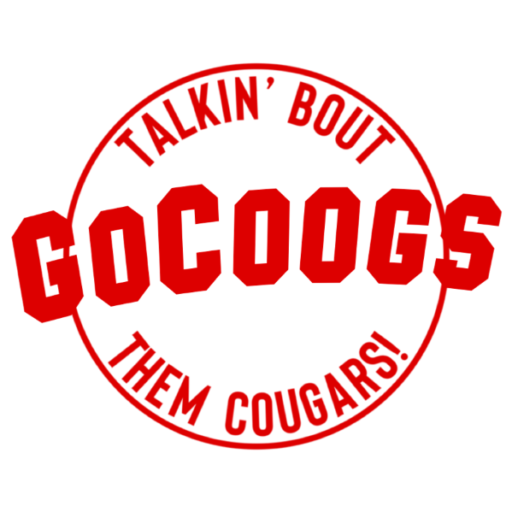The Big 12 got better this week. Significantly better. And a league that has had many chances to destroy the Big 12 was itself destroyed, thanks to hubris, arrogance, and aloofness. At this point, Brett Yormark is John Jenkins, and the Pac-12 is SMU’s 1989 defense.
But what does Hoss do next?
August 6, 2023 | the daily #6
Cut ‘Em Up. Cut ‘Em Up. Rah Rah Rah. Now, with 16 teams in the Big 12, the next question is – how do you divide them? And how does that affect UH?
There are two likely scenarios for how the new Big 12 will be divided: pods and divisions.
There’s a strong argument for pods, four mini-divisions of four teams each. In football, you’d play the other three teams in your pod and two from each pod. In that arrangement, every four-year player (if those even exist in the future) will get a chance to visit every school in the league (and schools in their pod twice).
UH’s best-case pod scenario would probably require Iowa State to forego decades of rivalries to be pod’d with Cincinnati, WVU, and UCF.
Those pods would look like this:
BYU-Utah-Arizona-Arizona State
Colorado-Kansas State-Kansas-Oklahoma State
Iowa State-Cincinnati-WVU-UCF
Texas Tech-TCU-Baylor-UH
100% of UH fans would take that, right?
But pulling Iowa State away from Kansas State and Kansas would be difficult. In a more likely scenario, the pods would be:
Colorado-Iowa State-Kansas-Kansas State
Arizona-Arizona State-BYU-Utah
Baylor-Oklahoma State-TCU-Texas Tech
Cincinnati-Houston-UCF-WVU
If pods happen, I think this is the one that would please the most fanbases and schools. But not UH. ADs and Presidents will be jostling for six months to figure out their pod mates, making sure they get to keep the games that will make them the most money and bring more TV coverage. That makes figuring out the pods tricky.
But I don’t think the commissioner wants pods, though. If Brett Yormark gets his way, the league will split two divisions along the 37th Parallel.
Yormark’s vision is to play time zone hopscotch, giving the league media coverage across the sporting day and setting the Big 12 up for the next round of media deals. He wants his league exposed to as many people as possible. And there may be no better way to do that than north/south divisions.
We call them the Closer to Canada/Closer to Mexico Divisions.
In this scenario, each division will have teams from the Mountain, Central, and Eastern time zones. Divisions would maintain almost all historic rivalries: all in-state rivalries, almost all Big Eight rivalries, creating geographically sensible divisions. In this arrangement, every four-year player will get a chance to play every school in the league (and travel to schools in their division twice).
A football team would play each school in his division and two teams from the other division (one home, one away). There would be no permanent cross-division rivals and no immediate repeats. For example, UH would play Kansas at home and BYU on the road one year and Utah at home and Kansas State on the road the next, Colorado at home and Iowa State on the road the following year, and WVU at home and Cincinnati on the road the following year. Then the cycle would repeat, but home and away would flip.
The downside is that you’d only visit a school in the other division once every eight years. The upside is keeping all the Texas schools and Oklahoma State together and having eastern and western media markets in each division.
It will be fascinating to watch it play out.







